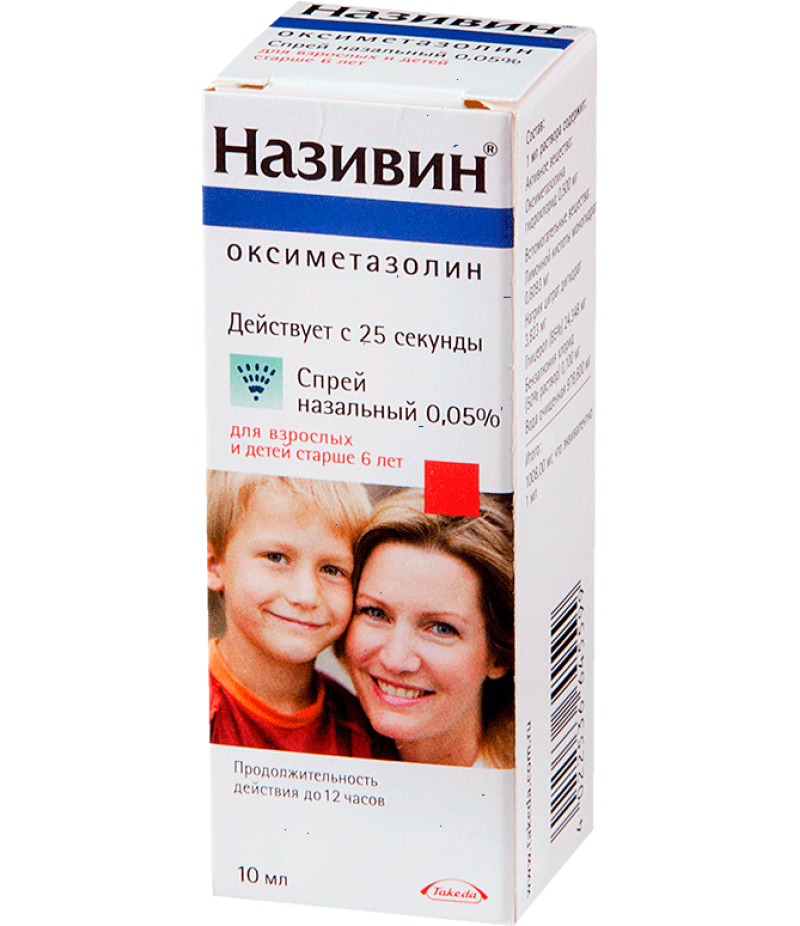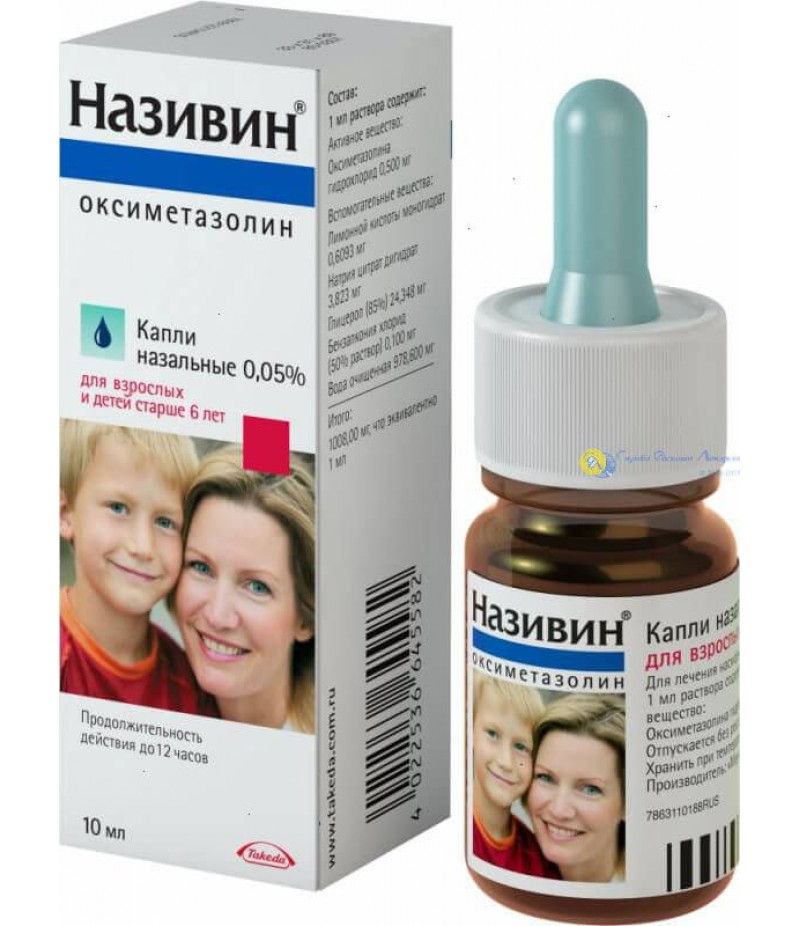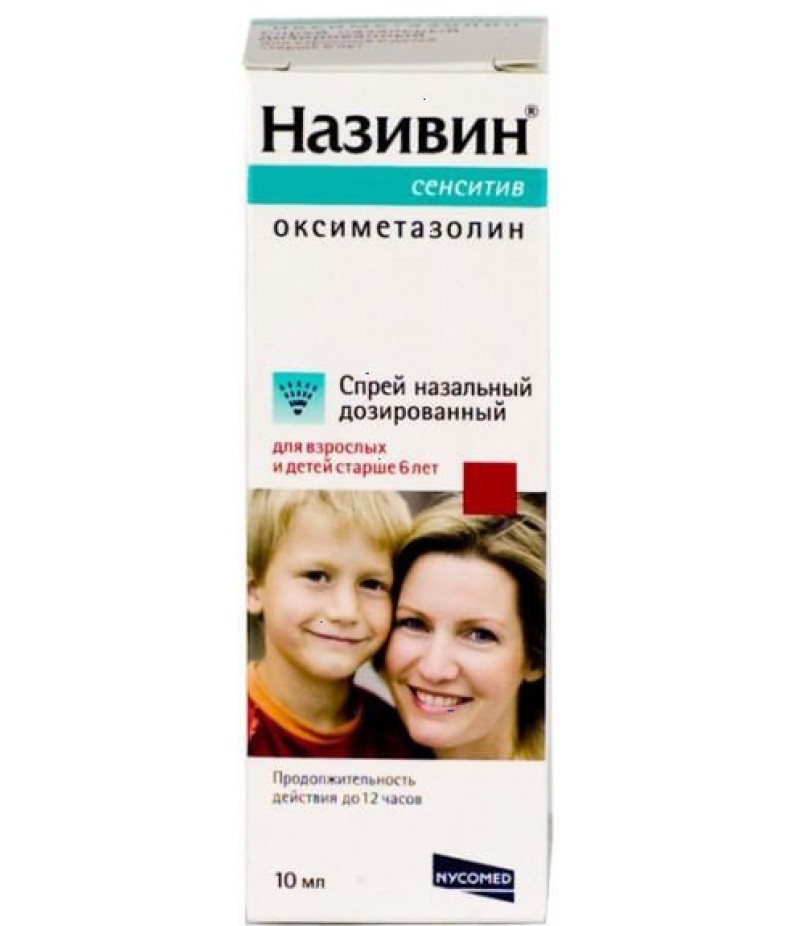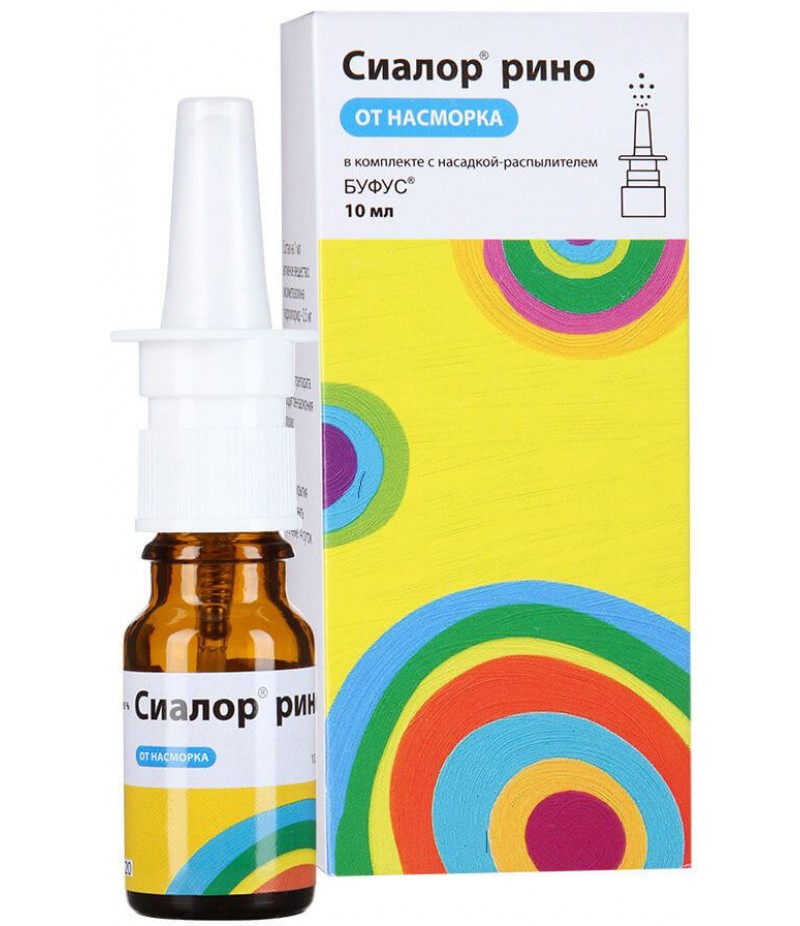Nasivin spray 0.05% 10ml
- $7.98
- 3 or more $7.88
- Availability:In Stock
Nasivin spray instruction for useReed more and buy Nasivin spray hereCompositionIn 1 ml of solution contains:Active substance:Oxymetazoline hydrochloride 0.500 mgExcipients: benzalkonium chloride, disodium edetinic acid, sodium di..
Tags: spray
Nasivin spray instruction for use
Reed more and buy Nasivin spray here
Composition
In 1 ml of solution contains:
Active substance:
Oxymetazoline hydrochloride 0.500 mg
Excipients: benzalkonium chloride, disodium edetinic acid, sodium dihydrogen phosphate, sodium monohydrogen phosphate.
Description
Practically transparent, almost colorless or slightly yellowish solution.
Pharmacotherapeutic group:
alpha2 - adrenomimetic agent.
Pharmacological properties
Nasivin belongs to the group of local vasoconstrictors (decongestants). Has an α-adrenomimetic effect.
Pharmacodynamics
As the imidazoline derivative, at low concentrations it renders mainly α2 -adrenomimeticheskoe action at high operating and α1-adrenoceptors. Narrows the vessels at the site of application, reduces swelling of the nasal mucosa and upper respiratory tract. At local nasal application in therapeutic concentrations does not irritate the mucous membrane, does not cause hyperemia. Studies of radio-labeled oxymetazoline have shown that this rhinological agent administered through the nose has no systemic effect.
Indications
Acute rhinitis (including allergic), vasomotor rhinitis, paranasal sinusitis, eustachiitis, otitis media.
Narrowing of the vessels of the mucosa with a diagnostic purpose (under the supervision of a doctor).
Contraindications for Nasivin spray
Hypersensitivity to the components of the drug, atrophic rhinitis.
Closed-angle glaucoma. Children under 6 years.
Edit Warnings
The drug should be used with caution in the following cases: arterial hypertension, arteriosclerosis expressed, tachycardia, increased intraocular pressure, hyperthyroidism, diabetes mellitus, pheochromocytoma, simultaneous MAO inhibitors and up to 10 days after the end of application.
Dosing and Administration
Nasivin 0.05% nasal spray is intended for use in the nose in adults and children over 6 years of age.
Adults and children over 6 years of age:
Apply Nasivin 0.05% nasal spray for 1 injection in each nostril 2-3 times a day.
Nasivin 0.05% nasal spray should be applied 3-5 days. Doses above recommended can be used only under the supervision of a doctor.
How should I use Nasivin 0.05% nasal spray?
Nasivin 0.05% nasal spray is injected by a sharp pressure on the vial in each nasal passage.
Interaction with other drugs
In applying Nasivin 0.05% nasal spray in the recommended dosage of interaction with tricyclic antidepressants and MAO inhibitors have been reported. A considerable overdose or ingestion Nasivin 0.05% nasal spray and tricyclic antidepressants or MAO-inhibitors simultaneously or immediately prior to application Nasivin 0.05% nasal spray may lead to increased blood pressure. Currently, there are no known cases of drug incompatibility.
Side effects of Nasivin spray
Sometimes burning or dry nasal membranes, sneezing. In rare cases - after the effect of using Nasivin, a strong sense of "stuffiness" of the nose (reactive hyperemia). Multiple overdose with local nasal use sometimes leads to such systemic sympathomimetic effects as increased heart rate (tachycardia) and increased blood pressure. In very rare cases, there was anxiety, insomnia, fatigue, headaches and nausea.
Overdose
After a significant overdose or accidental ingestion, the following symptoms may occur: pupillary narrowing, nausea, vomiting, cyanosis, fever, tachycardia, arrhythmia, vascular insufficiency, arterial hypertension, respiratory distress, pulmonary edema, cardiac arrest.
In addition, mental disorders may occur, as well as depression of central nervous system functions, accompanied by drowsiness, lower body temperature, bradycardia, arterial hypotension, respiratory arrest and possible development of coma.
Therapeutic measures for overdose:
Gastric lavage, taking activated charcoal and urgently seek medical attention.
special instructions for Nasivin spray
Long-term use of decongestants for instillation in the nasal cavity can lead to a weakening of their action. Abuse of these drugs can cause mucosal atrophy and reactive hyperemia with drug rhinitis, as well as damage to the mucosal epithelium and inhibition of epithelial activity. Avoid prolonged use and overdose.
Application during pregnancy and lactation:
During pregnancy and lactation, the recommended dosage should not be exceeded.
The drug should only be used after a thorough assessment of the risk-benefit relationship for the mother and fetus.
Influence on the ability to drive vehicles and equipment:
After prolonged use or taking cold remedies containing oxymetazoline, in dosages exceeding the recommended ones, one can not exclude the general effect on the cardiovascular system and the central nervous system. In these cases, the ability to drive a vehicle or equipment can be reduced.
Form of issue
Spray bottles of 10 ml.
Storage
At a temperature not higher than 25 ° C, out of the reach of children.
Shelf life - 3 years. Do not use after the expiration date stated on the package.
Conditions of leave from pharmacies
You can buy Nasivin spray without a doctor's prescription.





